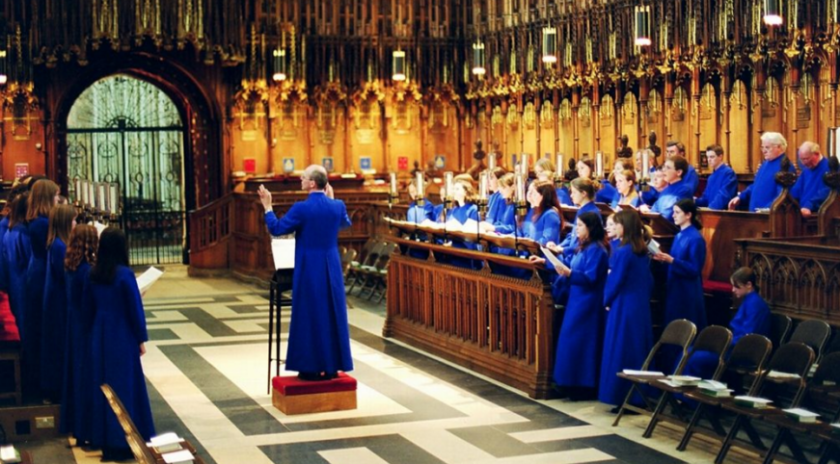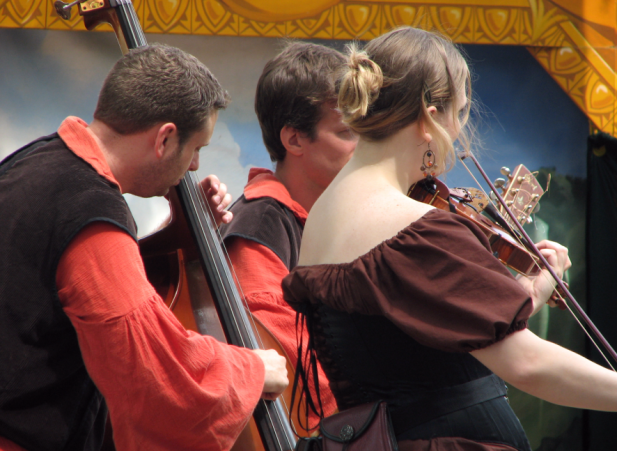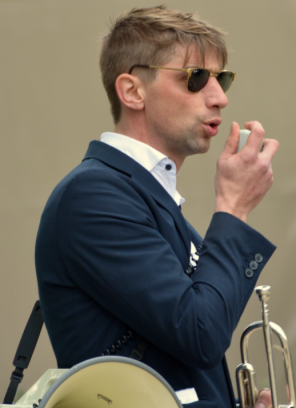Your personal music search space.
Augment your understanding of music.

YMUSIC SEARCH ENGINE
______________________________________________________________________________

WHY MUSIC? QUALITY ESSAYS ON MUSIC LISTENING FOR AVID READERS

TRY YMUSIC
Do you want to know more about sounds and how they produce their specific effects? Try YMusic, your free personal assistant (it includes musical criteria to select music), and experience music!
OPENINGS AS ESSENTIAL ELEMENTS OF THE MUSICAL TIME
Repetitions of an opening to unify an entire musical work
In musical time, as in human life, there are high points. Music is about being; it is also about becoming: a piece of music has a course. In this course, openings have their significance. In themselves, they are often short and most of the time, it is their repetition in various forms that gives them their importance.
For instance, the opening of Beethoven’s Symphony n° 5 is a motif made with four notes: three short ones and one long one. Being heard in the four movements of the symphony, it unifies the entire work. Of course, the structure of that specific opening in itself is smart: three iterations of the same note could sound annoying, yet they do not. The last long note, leaping down, and the contents of the symphony, enhance the three short notes. The leap down creates creates an impression of darkness. Let us notice that the opening is refined: no need for any chord. And the fact that other sets of three short notes followed by a longer one are inserted in the symphony reinforces its effect. In that context, the opening is like the first date with the loved one and the repetitions are like the discoveries made during marriage, classical music composer Rob Kapilow says. The metaphor is striking and we may add that we agree, thinking that Symphony n° 5’s introduction sounds like a precursor of themes written for film music. Let us notice that in the opening of Handel’s Hallelujah (Chorus), it is the contrary: a longer note is followed by three shorter notes, and that has an impact too. In this case, it does not create an impression of darkness, but it shows ectasy. And in this piece, the opening encapsulates the title of the piece: among the prayers, the Alleluia is one of the most ecstatic: it is the expression of intense emotions, sometimes even trance.
Openings in screen music
Often used to introduce or end them, theme music may be written for movies, television shows, radio programs or video games. Its function is similar to the role of a leitmotif: it is a musical phrase linked with a particular artistic work and it gives a fixed musical identity to that work. It may be short, around 1 minute, in television series for instance, or longer, around 4 minutes, in movies. Some theme music may really have a long life, like ‘Doctor Who’, written by Ron Grainer, which has undergone numerous arrangements.
In the world of screen music, composer John Williams really used the musical technique of leitmotif when he wrote the first theme of Star Wars. Leitmotif is most especially associated with Richard Wagner’s music and, in addition to fixing an artistic work or a character inside that work, it may signify a relationship or an idea. The theme of Star Wars naturally evokes the notions of adventure and heroism.

TRY YMUSIC
TRY YMUSIC
TRY YMUSIC
TRY YMUSIC
TRY YMUSIC
Do you want to listen to more sounds that you judge harmonious? Try the YMusic search engine, your free personal assistant (it includes musical criteria to select music), and find music that will enhance the perception of your inner time!
MUSICAL TIME AND THE INNER JUDGMENTS OF MUSIC LISTENERS AND COMPOSERS
What kind of sounds do people love to hear and produce?
A part of listening has actually nothing to do with perception and hearing only: we perceive sounds in the street or the noise of the fridge outside of any consciousness. People try not to register them and if they do, they forget about them. Why? Because their frequencies hit the ears in a random order: the level of unpredictability is actually too high. Of course random signals are useful: when babies are crying, their parents know that they must cuddle, feed or change them.
But generally, listeners love to pay attention when sounds are organized in a harmonious way and become music. Even sounds that could be described as chaotic may capture the attention, when they are structured; scores written for horror movies illustrate this phenomenon: they are written by composers in order to contain both connected frequencies and unpredictability. So, above all, listening is paying attention to sounds.
Music listening and the perception of the inner world
Listening to music, listeners may sometimes have feelings of time dilation and timelessness. In both cases, in these musical times, they are aware of themselves more than focused on the time written on a watch. They may experience a personalized flow of time instead of following a rigid pulse: they focus on musical intervals rather than on unities of time. Listening to music, listeners experience time as being slow or, on the contrary, quick: it depends on their emotional involvement and on the type of music.
Music affects a listener’s heart rate, memory and reference processes and creates physiological arousal. It may influence the way in which the world is experienced on a basic level; for instance, the usual perception of space may be distorted. It gives insights related to the way listeners perceive their inner world before they put words on their experience.
Music making and judgment on music
Let us notice that, perceiving music, listeners make judgments on it. And so do composers and sound engineers. For music makers, the question of musical time is double: first they try to write and polish music in order that it reflects their internal states. They are searching for harmony, proportions, coordination. They also want to create effects of surprise. They think about their work, again and again, trying to fulfil the wishes of current audiences and potential ones.
Let us notice that, as technology is unceasingly advancing and as musical works may be refined continually, generally, composers do not publish pieces of music that they do not feel good about. However, as it is so easy never to get things done, music makers simply use the calendar to fix time-limits, especially when they are producing their work themselves. Getting things done, including in the field of marketing, helps them to resist the temptation of perfectionism.

Do you want to experience the various temporal relationships expressed by music through different genres? Try the YMusic search engine, your free personal assistant (it includes musical criteria to select music), and feel the singularity of each piece of music!
IS MUSIC THE EXPRESSION OF ETERNITY?
Music, time and human will in the philosophy of Schopenhauer
Amongst the arts, music has a special place, philosopher Schopenhauer says: in fact, it does not reproduce or repeat any idea of the beings and things which are in the world. Because of this, it is very difficult to produce a discourse related to music that is totally objective, especially when nothing, in the title of a piece of music, gives an indication of its meaning. Music is not the reproduction of any human phenomenon. However, it seems that it is a phenomenon in itself: an immediate reproduction of the will. Actually music is released from objectivity.
For Schopenhauer, music may be perceived only in time and through time. It is the same for the will in general, during which an individual becomes aware of the self. By taking on the shape of temporality itself, music seems to find again the beginning of the world, of which it is a repetition. The time of music is the time of the individual human being, the time of existence and the time of the will. That is why music is a privileged means of expressing emotions. And an element like the melody may be associated naturally to interiority.
Music depicts all movement of the will, everythig that is implied by the term ‘sentiment’: music is the language of all passions, even if it can be examined by reason. Music does not express any phenomenon, but the essence of the phenomenon, the will itself. Music voices the core of the sentiment.
During a piece of music, intervals express the multiple forms of the will and their realization, Schopenhauer says. And he adds that they tell the secrets of the human will. For him, the melody is a manifestation of the will in its higher state.
Musical emotions and infinity
If music is like the will, what does it imply? That the music listener has an auditive consciousness, where music can appear, where musical images can be created: a musical vision may emerge from the sounds that are heard. Through sound, music unveils a plural temporality: music expresses the essence of temporal relationships like delay, recall, waiting, extending, anteriority, contraction, anticipation, simultaneity, posterity, reminiscences and returns, effects of speed and surprise, philosopher Christian Accaoui says.
Yet musical time is not similar to scientific time. Musical time is full of human consciousness and sensible life, reconciling thought and sensibility. Sound, like beings, begins, grows and dies. In an ensemble or an orchestra, different instruments play different parts containing different musical notes: it creates a plurality of temporality. Combined with silence, it creates in the mind of the listeners a sense of eternity. Especially when the music has ended, the mind may experience eternity.

Do you want to exercise your reflexive consciousness by listening to music? Try the YMusic search engine, your free personal assistant (it includes musical criteria to select music), and discover a wide variety of musical time!
MUSIC, TIME AND HUMAN CONSCIOUSNESS
What is time, basically?
Time, which is often called the ‘fourth dimension’ (besides the three spatial dimensions), is the passage from the past to the future via the present. It is measured by different instruments. Different referral systems are used to dissect time, which thus has a cultural and a social dimension: it is, in the field of external activities, a useful way to do things or to meet people. Generally, time is what a clock may show.
Also, time is felt by the singular individual being. At the physical level, the human brain is equipped to have a clear perception of the general human daily rhythm and all human needs related to cycles (like sleep, heart rate, blood circulation, etc). Also, human beings have a mental chronometry that helps them to react to stimuli that appear in their environment.
Yet there is a sort of internal human time that is less quantified: the time that human beings experience through their consciousness. Consciousness is not easy to define. It is linked to an ability to develop a sense of the self and moves towards the notions of awareness and subjectivity. There are mainly four stages of consciousness: sensory experience (people have affects), practical consciousness (dealing with to-do things), reflective consciousness (day-to-day thinking about what must be done) and reflexive consciousness (questioning the nature of things). Reaching the last stage, human beings may develop an awareness of their internal, individual time.
Consciousness and music composition
Daily, music composers exercise their reflexive consciousness in the framework of musical composition and shape both the external and their internal time. By nature, elements like musical notes and ranges refer to a common time that is shared by all members of a specific musical community. In each period, composers create novel time experiences that renew music styles or create new genres. Actually, what is called ‘classical music’, for example, presents a high variety of forms where different composers express musical time in various ways. The musical time of a piece written by Palestrina or Monteverdi is very different from what is found in a work composed by Brückner or Wagner. And, of course, musical temporality is very different in music genres around the world, classical Western music and classical Indian Music, for instance.
It is even more so in contemporary music, where the reference to the staff is sometimes reduced or suppressed: as changes of all kinds are less predictable, the listener may easily lose their sense of time. Even when there are a lot of repetitions of sequences in the same piece of music, slight modifications of each sequence eliminate any sense of predictability. It is the case for example in the music of Steve Reich.


Do you want to get a wider view of techniques music composers when they shape musical time? Try the YMusic search engine, your free personal assistant (it includes musical criteria to select music), and discern what you like the most!
POPULAR MUSIC COMPOSERS AND THE CREATION OF MUSICAL TIME
How do musicians generally shape musical time?
Composing pieces of music, artists intend to convey a message and share thoughts and emotions and, once the work is done, they try to obtain specific reactions from listeners. The objectives of composers and the reception of their music by listeners may partly overlap; composers try to increase the concordance between their work and the expectations of the listeners. Composers quantify different musical elements; however, as in a conversation, the words can be misunderstood: a musical work may be misunderstood by the public.
How can music composers help listeners to understand their perception of musical time? First, they may question themselves about their identity as musicians and about their musical vision. They may define what they really want to get across when they share their results, be it a specific verse or a whole song, with a particular mix or arrangement. Then listeners may get a wider view of their intentions when they shape musical time and judge whether they appreciate it or not.
The musical time and the use of repetition inside a piece of music
One particular challenge linked to music creation is, for composers, the question of repetition. Recording musicians at the beginning of their career are generally impatient to produce a lot of complete pieces of music. It is one reason why they tend to insert a significant amount of repetition into them, thinking they are innovative. Being themselves music composers and producers, the best teachers listen to thousands of songs each year and they say that, actually, repetition may be useful only if it is elegant. What does this mean? An example is provided by ‘I have a dream’, a speech by Martin Luther King, where one may find variations around the theme of dissatisfaction: ‘We can never be satisfied’, ‘We cannot be satisfied’, ‘No, no, we are not satisfied’.
Is an elegant repetition more a variation than a pure repetition? No. Pure repetition helps the listener to remember a song, and songs easily remembered stay more easily in the memory. Each rock lover remembers that ‘Hey Jude’ by the Beatles includes more than 3 minutes of repetitions. And it is not disturbing at all. It even may be catchy. In the case of ‘Hey Jude’, the repetition is actually a strong coda that takes the form of a chorus, and what precedes it is something of an introduction: after it, the listener may, in a sense, fall into it.
It is all about inserting the right repetition, at the right place, at the right time, according to the main content of the song. Then, instead of being an obstacle, repetition may be an asset. Well-known groups and solo musicians like Sting, Queen or Prince understood it. Repetition is familiar to the human being: breathing, eating, sleeping, so many realities of everyday life are by nature repetitive.
WHAT ARE THE VARIOUS WAYS USED BY COMPOSERS TO MODIFY MUSICAL TIME?
Musical time as it is perceived by music listeners
As music is a succession of sounds that reach the eardrum, the perception of a piece of music is always temporal. When it is played, the physical sensation of each sound is felt in the present. Sounds move in time, reflecting the musical temporality of the composer at work. Let us notice that, in the same piece of music, different tracks, having different duration, loudness, timbre or pitch may progress in different directions. Listening to them, listeners co-create in their minds a musical narrative.
Music, as listeners experience it when they listen to a recording, is a temporal art. Yet sometimes, in doing so, they lose all sense of external time through the music. Composer Karl-Heinz Stockhausen says that, during these moments, they experience musical time most strongly, tasting the various combinations of musical elements like melodies and rhythms.
The various temporalities of a musical piece
Music can literally embody diverse temporalities: music can bring the flow of time into the forefront of consciousness, in a way that is different from the time that listeners feel during everyday experience. What is the time of that flow? It depends on the will of the composer. Time may be organized in a regular and linear manner or on the contrary divided into multiple tracks. Any of these tracks may be repeated, notably to create the idea of a memory. Another process is the modification of the temporal layout, which may go as far as time reversal.
To express different temporalities around the same musical structure, the formal technique of variation is ideal. It helps to transform a piece of music whilst repeating its different elements in a modified form, be it melody, rhythms, timbre, harmony, orchestration, counterpoint of combinations of these items. For example, a theme will be transformed in order to sound more dramatic or dynamic. The best known variations are called the ‘Goldberg Variations’. They consist of one theme that is modified in 30 variations. The piece is attributed to Johann Sebastian Bach, even if there is controversy over the authorship.
Sometimes, to modify the temporality of a piece of music, a simple change of cadence or key or the transposition of a chord may be enough. The process of syncopation is powerful too. Syncopation is not only experienced in jazz improvisation or dance music. It is present in the ‘Goldberg Variations’ and was used by other great composers like Handel, Mozart, Beethoven, Schubert, etc. Involving a variety of rhythms that are, in a way or another, unexpected, it is an ideal way to create temporal variations in a piece of music. Musically speaking, varied rhythms may take different forms. It is not always the case, but they may involve time loops. In that case, they may have a hypnotic effect on the mind of listeners.
In order to know more about sounds and perceive changes in musical temporality, try the YMusic search engine, your free personal assistant (it includes musical criteria to select music)!
TIME IN MUSIC
Music is mathematical and a piece of music is unfolding in external time. Yet the listener has a personal internal time, felt by the singular individual being. The following essays explain these two aspects of musical time and how they relate to each other.
WHAT ARE THE VARIOUS WAYS USED BY COMPOSERS TO MODIFY MUSICAL TIME?